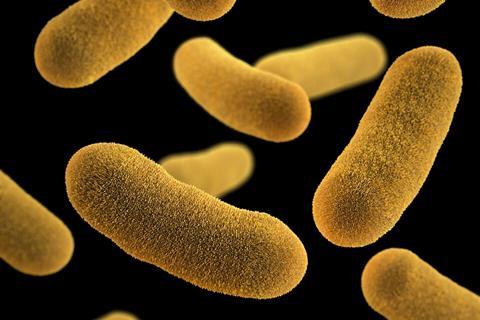Bacterial pathogens such as Salmonella, Shigella or Yersinia use the type III secretion system (T3SS), a syringe-like protein structure, for targeted injection of disease-causing proteins into human cells.

This injection system is crucial to bacterial ability to trigger infections, enabling Yersinia bacteria to suppress human immune response. However, activating the T3SS comes at a price: As soon as it is active, the bacteria stop growing and can no longer reproduce and spread.
READ MORE: Researchers reveal how pathogenic bacteria load their syringes
READ MORE: Single-celled kamikazes spearhead bacterial infection
“Until now, it was unclear how Yersinia enterocolitica resolved this conflict between virulence and reproduction,” said Dr. Andreas Diepold from KIT’s Institute for Applied Biosciences.
Molecular switch for virulence
A research team headed by Diepold has now shown that Y. enterocolitica has a sort of density sensor. When many bacteria are present in one place, a regulatory mechanism switches the T3SS off. The secretion system remains active only in the cells at the outer edge of a colony.
“That enables the bacteria that aren’t exposed to the immune system to continue reproducing,” Diepold said. “This is a highly specific and reversible mechanism. As soon as the bacteria spread again, the system can be reactivated.”
Key to this switching mechanism is the protein VirF, which controls T3SS formation. Higher cell density results in an increased concentration of small RNA molecules that then downregulate the protein complex, significantly reducing the activity of the entire secretion system.
Evading the immune system
The researchers also found out that not only the T3SS is deactivated but also the protein YadA, which is responsible for adhesion to cells in host organisms. As a result, the bacteria become more mobile and less apparent to the immune system. This evasion mechanism could help the bacteria reach new tissues or form new colonies in the human body.
“Our results show that Yersinia doesn’t just passively react to environmental conditions. Instead it actively switches between a virulent and a reproductive phase,” Diepold said. “This enables it to withstand the immune response and then reproduce efficiently afterward.” The T3SS can be reassembled within 30 to 60 minutes.
The study provides important information not only about how bacterial infections start but also about how they proceed. “Many therapeutic approaches focus on how infections start, but we also need to know how germs behave in the body later on,” Diepold said, noting that specific T3SS deactivation at high cell density is an underappreciated but potentially useful therapeutic mechanism.
In the long run, such insights could improve treatment of bacterial infections, for instance by the targeted disruption of switching mechanisms or by influencing how bacteria sense cell density. “The more we know about these systems, the better we can counteract them,” concluded Diepold.
Francesca Ermoli, Gabriele Malengo, Christoph Spahn, Corentin Brianceau, Timo Glatter and Andreas Diepold: Yersinia actively downregulates type III secretion and adhesion at higher cell densities, 2025 doi.org/10.1371/journal.ppat.1013423 DOI: 10.1371/journal.ppat.1013423







No comments yet